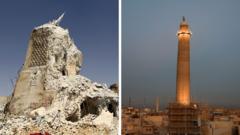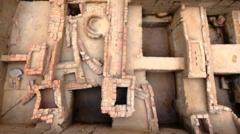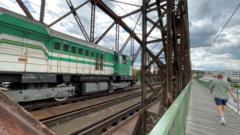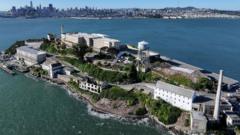Historic and once-devastated landmarks in Mosul, Iraq, are beginning to reclaim their former glory following a multi-million dollar restoration effort spearheaded by UNESCO. This monumental endeavor comes after years of destruction during the city's occupation by the extremist group Islamic State (IS), which began in 2014 and lasted until the group's defeat in 2017.
A poignant ceremony marking this historic revival will be attended by UNESCO's director-general Audrey Azoulay alongside local artisans and representatives from various faith communities. Mosul, which had been recognized for its religious tolerance, became a battleground during the conflict, leading to significant loss of life and cultural heritage. The intense fighting resulted in the destruction of iconic structures, including the al-Hadba minaret, an enduring symbol of the city.
Photographer Ali al-Baroodi remembers the stark transformation that took place during and after the IS occupation, describing his early return as a "ghost town" filled with devastating sights and lingering horrors. The battle for Mosul left approximately 80% of its Old City in ruins, and reconstruction was paramount, not only for the physical structures but for fostering community bonds among the residents who sought to reclaim their home amid the residual scars of war.
Funded by a collective budget of $115 million from partners including the United Arab Emirates and the European Union, efforts to restore Mosul began as a daunting challenge. Father Olivier Poquillon, who has played a pivotal role in overseeing the restoration of the al-Saa'a convent, emphasized that rebuilding trust among the city’s varied communities was critical for effective reconstruction. His team includes local individuals from diverse backgrounds, illustrating a collaborative approach to both restoration and reconciliation.
Maria Rita Acetoso, the lead architect of this ambitious initiative, noted that the project symbolizes not only cultural renewal but also job creation and skill development, especially for the youth of Mosul. With over 1,300 local youths trained in traditional crafts and 6,000 new jobs created, the restoration effort has been transformative. Schools, churches, and other essential buildings have been rehabilitated, while historical artifacts have been recovered from the debris.
The revitalized al-Tahera Church, alongside the restored al-Hadba minaret and convents, now fill the air with ringing bells, signifying a return to daily life for many former residents. One such resident, Mustafa, expressed joy in seeing his historical home restored after it fell victim to the delays of war. Another, Abdullah, recounted the emotional weight tied to his family's legacy, which had been threatened by the devastation.
Despite the joyful resurgence of community life and landmark restoration, the emotional scars of conflict loom heavy over the city. Yet, for many, the rejuvenation of Mosul's cultural identity represents a poignant symbol of hope for the future. As communities continue to unify through reconstruction, Mosul emerges from its dark past, with its streets echoing once more with the vibrancy of life.






















